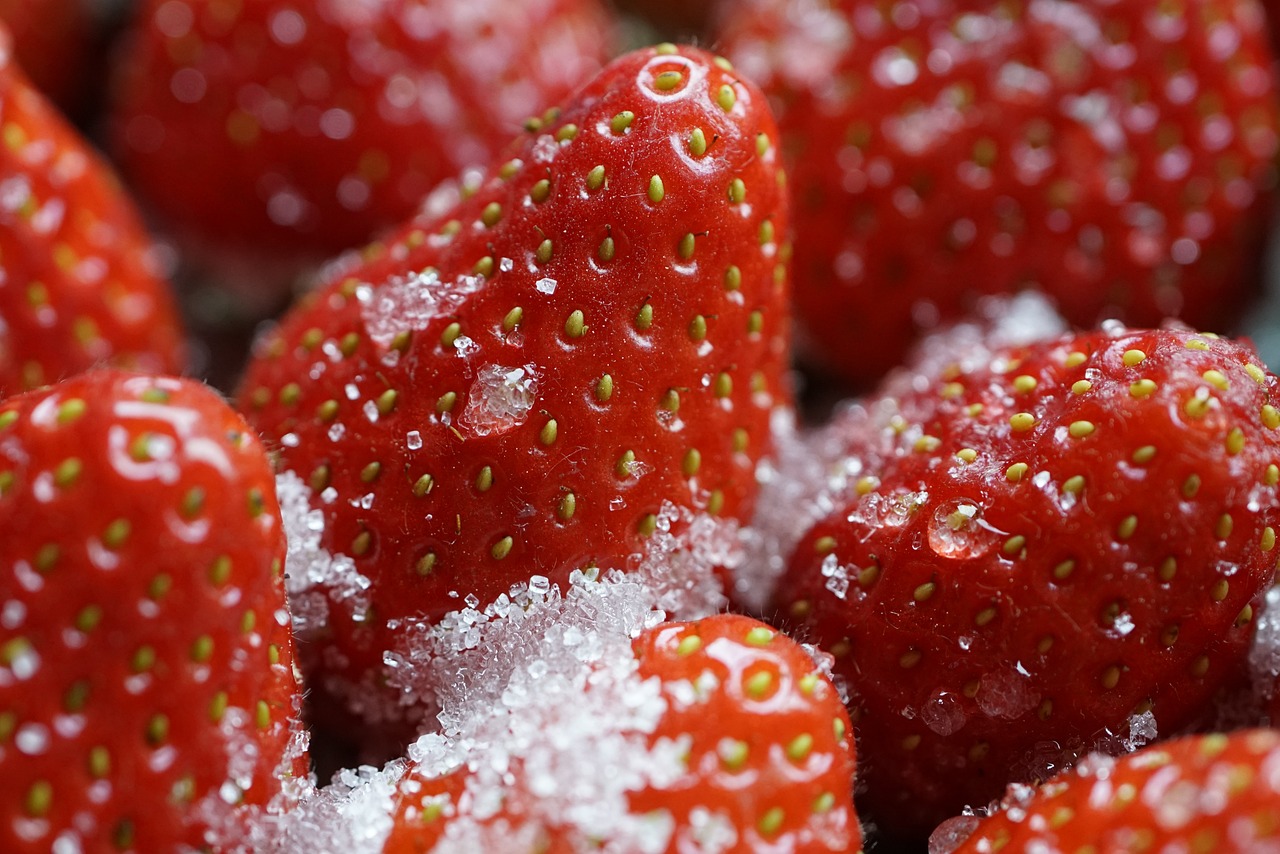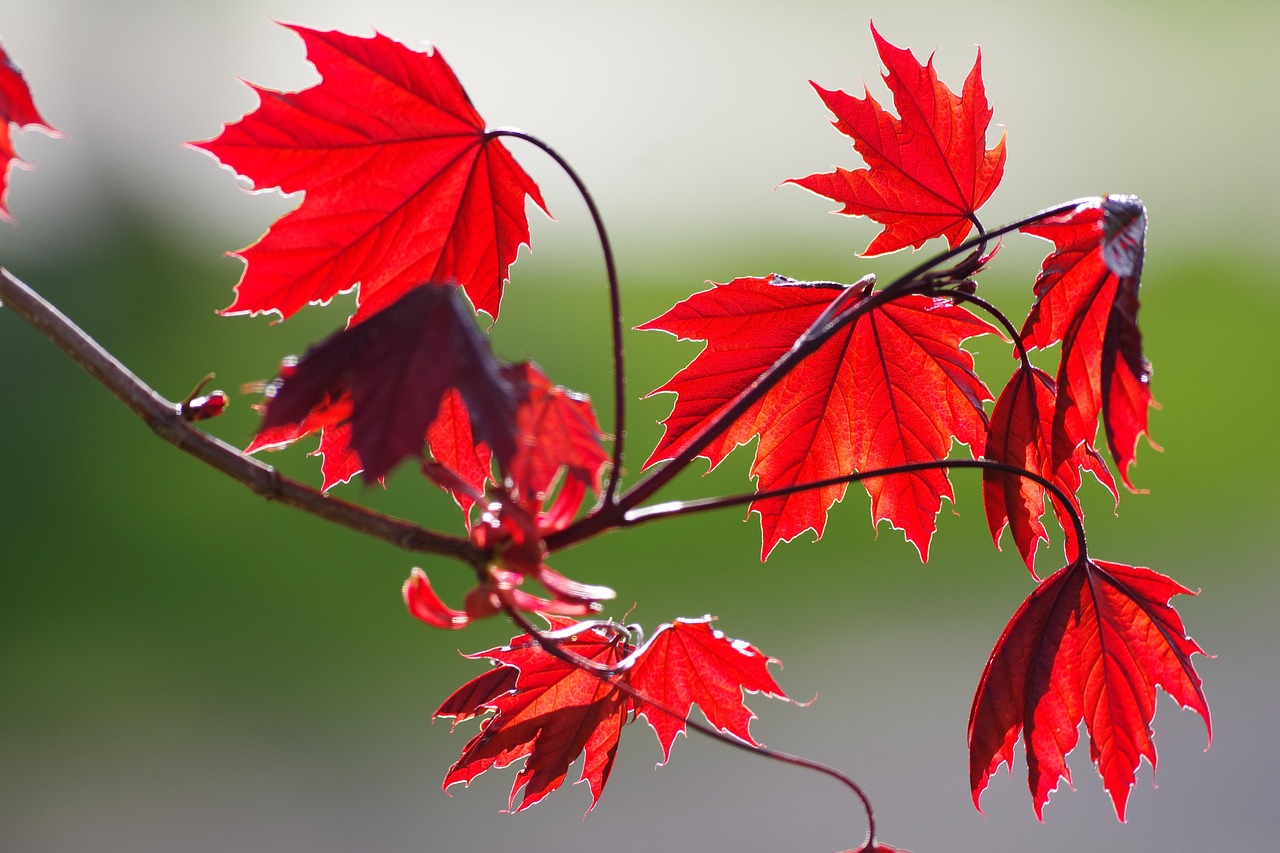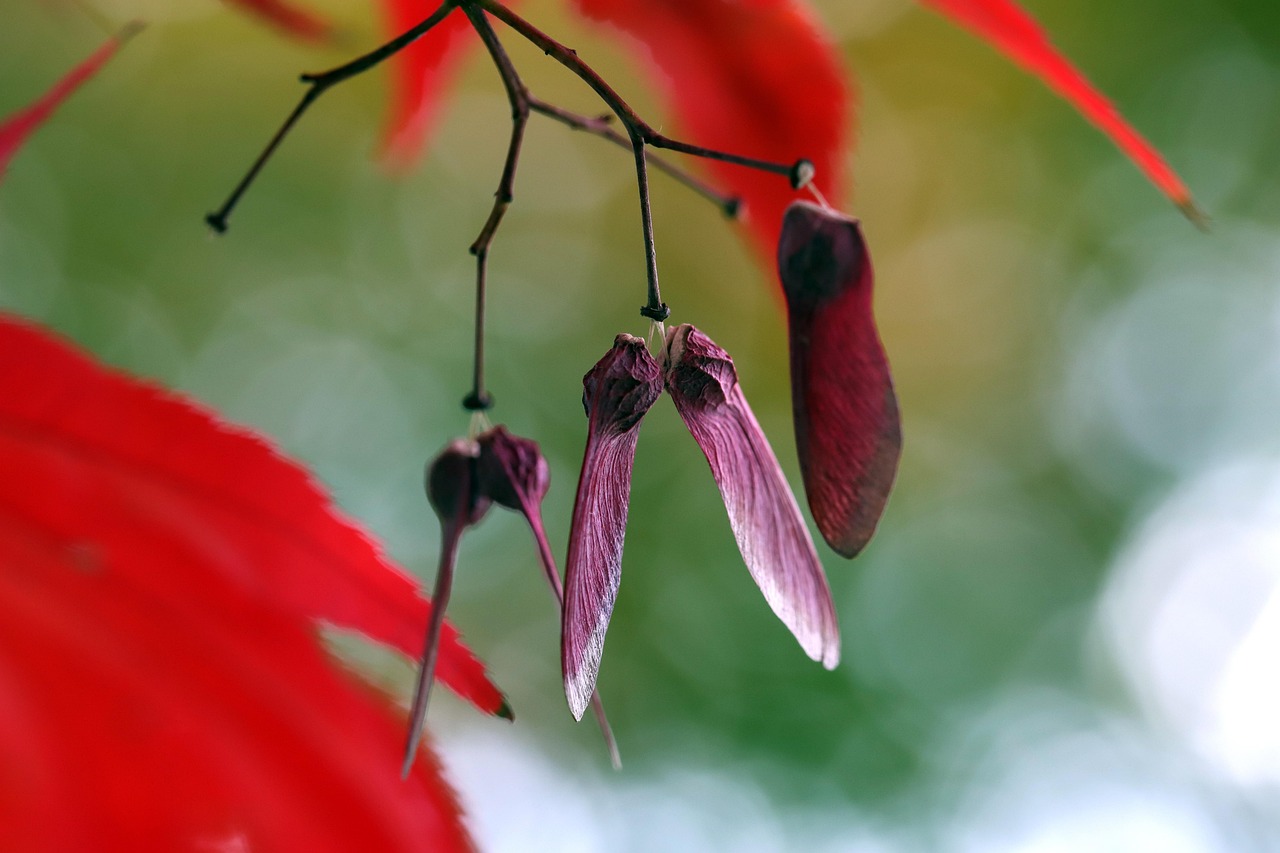Sugar maples should be planted at least 30 to 40 feet apart to allow for their expansive canopy growth and to ensure adequate sunlight and air circulation. This spacing helps prevent disease and promotes healthier trees.
Understanding Sugar Maples

Sugar maples (Acer saccharum) are renowned for their stunning fall foliage and are a popular choice for landscaping and urban settings. These majestic trees can grow to heights of 60 to 75 feet, with a spread of 40 to 50 feet. Their broad, dense canopies provide shade, making them ideal for parks, residential areas, and along streets. One of the critical factors in successfully planting sugar maples is understanding the proper spacing between them.
When considering how far apart to plant sugar maples, it is essential to take into account their mature size. Adequate spacing allows each tree to thrive without competing for resources such as sunlight, water, and nutrients. Furthermore, proper spacing helps reduce the risk of diseases that can spread in crowded conditions.
Factors Influencing Spacing
Several factors can influence how far apart you should plant sugar maples. These include soil quality, available sunlight, and intended use of the trees. Below are key considerations that can help guide your planting decisions:
- Soil Quality: Rich, well-draining soil supports healthy root development. If the soil is poor or compacted, consider increasing the spacing to allow for better growth.
- Sunlight: Sugar maples prefer full sun to partial shade. Ensure that each tree receives adequate sunlight by maintaining proper distances.
- Wind Exposure: In areas with strong winds, planting trees further apart can help reduce stress on individual trees.
- Aesthetic Preferences: Depending on your landscape design, you may choose to plant them closer or further apart for visual appeal.
Recommended Spacing Guidelines
The general guideline of 30 to 40 feet apart applies in most scenarios. However, specific conditions may warrant adjustments. Here are some recommendations based on various situations:
| Condition | Spacing Recommendation |
|---|---|
| Average Soil Quality | 30-40 feet |
| Poor Soil Quality | 40-50 feet |
| Full Sunlight | 30-35 feet |
| Partial Shade | 40-50 feet |
| Urban Settings (space limited) | 20-30 feet |
In urban environments where space is often limited, planting sugar maples closer together can be acceptable. However, be mindful of their growth patterns and ensure there is enough room for air circulation and light exposure. Regular maintenance and pruning may also be necessary in these situations to promote healthy growth.
By taking into account these guidelines and factors, you can create a thriving environment that benefits both the sugar maples and your landscape as a whole. Proper spacing will not only enhance the aesthetic value but also ensure the longevity and health of these beautiful trees.
Planting Techniques for Sugar Maples
When planting sugar maples, employing the right techniques can significantly affect their growth and overall health. The process involves several steps, from selecting the right location to preparing the soil. Understanding these techniques ensures that your trees will thrive in their new environment.
Choosing the Right Location
The location where you plant your sugar maples plays a vital role in their development. Here are some key factors to consider when selecting a site:
- Sunlight: Sugar maples thrive in full sun to partial shade. Ensure your chosen location receives at least six hours of sunlight daily.
- Soil Drainage: Well-drained soil is crucial. Avoid areas prone to waterlogging, as standing water can lead to root rot.
- Space: Check for nearby structures or other trees that may hinder growth. Ensure there is enough space for the tree’s mature width.
- Protection from Wind: If possible, choose a site protected from strong winds that can damage young trees.
Soil Preparation
Preparing the soil before planting is essential for the success of sugar maples. Proper soil preparation promotes healthy root development and nutrient uptake. Follow these steps for effective soil preparation:
- Testing Soil Quality: Before planting, conduct a soil test to check pH levels and nutrient content. Sugar maples prefer slightly acidic soil with a pH of 6.0 to 7.0.
- Add Organic Matter: Incorporate organic matter such as compost or well-rotted manure into the soil. This improves fertility and drainage.
- Tilling: Till the soil to a depth of about 12 inches to aerate it and break up compacted areas.
- Leveling the Ground: Ensure the planting area is level to facilitate even water distribution.
Planting Sugar Maples
Once you have selected the location and prepared the soil, it is time to plant your sugar maples. Follow these guidelines for successful planting:
- Digging the Hole: Dig a hole that is two to three times wider than the root ball but no deeper than the root ball’s height. This encourages lateral root growth.
- Positioning the Tree: Place the tree in the center of the hole. Ensure that the top of the root ball is level with or slightly above the surrounding soil.
- Backfilling: Fill the hole with soil, gently packing it down to eliminate air pockets. Water thoroughly after backfilling to help settle the soil.
- Mulching: Apply a 2 to 3-inch layer of mulch around the base of the tree, keeping it away from the trunk. Mulch helps retain moisture and suppresses weeds.
Watering After Planting
Proper watering is crucial after planting sugar maples. Newly planted trees require consistent moisture to establish their roots. Here are some tips for watering:
- Initial Watering: Water deeply immediately after planting to ensure that the roots have enough moisture.
- Ongoing Watering: For the first growing season, water once a week if there is little rainfall, providing about an inch of water each time.
- Avoid Overwatering: Ensure that the soil drains well and do not let the roots sit in water, as this can lead to root rot.
Caring for Sugar Maples Post-Planting

Caring for your sugar maples after planting is essential for their long-term health. Regular maintenance will promote strong growth and resilience against pests and diseases. Consider these care tips:
- Fertilizing: Apply a balanced fertilizer in early spring to provide essential nutrients, especially in poor soil conditions.
- Pruning: Prune dead or damaged branches during dormancy in late winter or early spring to encourage healthy growth.
- Pest Management: Keep an eye out for common pests like aphids or borers. Regular inspections will help catch any issues early on.
By following these planting techniques and care guidelines, you can set your sugar maples up for success in your landscape. Proper planning and maintenance will lead to healthy trees that enhance your outdoor space for years to come.

Common Diseases and Pests Affecting Sugar Maples
Like all trees, sugar maples are susceptible to various diseases and pests that can impact their health and growth. Being aware of these threats is crucial for effective management and maintaining healthy trees. Here are some common issues to watch for:
Diseases
Sugar maples can be affected by several diseases, which may manifest through various symptoms. Recognizing these diseases early can help mitigate their impact:
- Maple Decline: This complex disease usually results from environmental stressors, like drought or poor soil conditions. Affected trees show stunted growth, yellowing leaves, and premature leaf drop.
- Verticillium Wilt: A soil-borne fungus that causes leaves to wilt and turn yellow. Eventually, branches may die back as the infection spreads through the tree.
- Tar Spot: This fungal disease appears as dark, tar-like spots on leaves. While it rarely causes severe damage, it can affect the tree’s aesthetic appeal.
- Root Rot: Often caused by overwatering or poorly draining soil, root rot can lead to wilting and dieback. Signs include darkened roots and a foul odor from the soil.
Pests
In addition to diseases, sugar maples can be targeted by various pests. Regular monitoring can help you catch infestations before they become serious:
- Aphids: These small insects feed on sap from leaves, causing curling and yellowing. While they are not usually fatal, they can weaken the tree.
- Maple Borer: The larvae of this beetle tunnel into the bark, disrupting nutrient flow. Infestations can lead to wilting and branch dieback.
- Scale Insects: These pests attach themselves to branches and leaves, sucking sap and weakening the tree. They can also produce honeydew, attracting ants and sooty mold.
- Spider Mites: These tiny arachnids thrive in dry conditions. Symptoms include stippling on leaves and webbing on branches.
Managing Diseases and Pests
Effective management of diseases and pests is crucial for keeping your sugar maples healthy. Here are some strategies to consider:
Cultural Practices
Implementing good cultural practices can significantly reduce the likelihood of disease and pest infestations:
- Proper Watering: Ensure deep watering rather than frequent shallow watering. This encourages deep root growth and reduces stress.
- Soil Health: Maintain healthy soil by adding organic matter and ensuring proper drainage. Healthy soil promotes stronger trees that can resist diseases.
- Avoid Overcrowding: Proper spacing between trees allows for better air circulation, reducing humidity levels that favor disease development.
Pest Management Techniques
If pests are detected on your sugar maples, consider these management techniques:
- Regular Inspections: Frequently check your trees for signs of pests or disease. Early detection is vital for effective control.
- Natural Predators: Encourage beneficial insects, such as ladybugs or lacewings, which prey on aphids and other harmful pests.
- Pesticides: If infestations are severe, consider using targeted insecticides. Always follow label instructions and consider organic options first.
- Pruning: Remove affected branches promptly to prevent the spread of diseases or pests to healthy parts of the tree.
The Importance of Seasonal Care
Caring for sugar maples is an ongoing process that varies with the seasons. Each season offers unique opportunities for care and maintenance:
Spring Care
In spring, as trees begin to leaf out, focus on fertilizing and watering:
- Fertilization: Apply a balanced fertilizer as new growth starts to provide essential nutrients.
- Watering: Ensure adequate moisture during dry spells to support new leaf development.
Summer Care
During the summer months, monitor for pests and water needs:
- Pest Monitoring: Keep an eye out for signs of infestation as warm weather brings increased pest activity.
- Mulching: Maintain mulch around the base to retain moisture and suppress weeds.
Fall Care
As fall approaches, prepare your trees for winter:
- Leaf Cleanup: Rake fallen leaves to prevent potential fungal diseases over the winter.
- Watering Before Dormancy: Water deeply to ensure trees are hydrated before entering dormancy.
Winter Care
In winter, prevention is key:
- Protection from Ice and Snow: If heavy snow or ice accumulates on branches, gently remove it to prevent breakage.
- Avoid Fertilization: Do not fertilize in winter as trees are dormant and cannot utilize nutrients effectively.
Additional Considerations for Planting Sugar Maples

In addition to spacing and seasonal care, there are several other factors to keep in mind when planting and caring for sugar maples. These considerations can enhance the success of your trees and improve their overall health.
Companion Planting
Choosing the right plants to grow alongside sugar maples can have positive effects on both the trees and other plants. Some beneficial companion plants include:
- Native Grasses: These can provide ground cover, helping to retain soil moisture and reduce competition for nutrients.
- Herbaceous Perennials: Plants like hostas or ferns thrive in the shade provided by sugar maples, making them excellent companions.
- Flowering Plants: Species such as bleeding heart or columbine can add color and attract pollinators without competing heavily for resources.
Avoiding Soil Compaction
Soil compaction is a significant concern when planting trees. Compacted soil restricts root growth and inhibits water infiltration. To avoid this issue:
- Limit Foot Traffic: Avoid walking near the base of young trees, especially in wet conditions.
- Create a Barrier: Use mulch or decorative stones around the base to designate the area and discourage foot traffic.
- Rotate Planting Areas: If you are planting multiple trees, rotate planting locations each year to prevent soil compaction.
Understanding Growth Rates
Sugar maples are moderate to fast-growing trees, typically adding 1 to 2 feet in height each year under optimal conditions. However, growth rates can vary based on factors such as soil quality, water availability, and climate. Understanding these growth patterns can help you manage expectations and care appropriately.
Environmental Impact
Sugar maples play a crucial role in their ecosystems. They provide habitat for various wildlife species and contribute to biodiversity. Additionally, their ability to absorb carbon dioxide makes them valuable in combating climate change. By planting sugar maples responsibly, you contribute positively to the environment.
Final Thoughts
Planting sugar maples involves more than just determining how far apart to place them. By considering factors such as location, soil preparation, seasonal care, and pest management, you can ensure that your sugar maples thrive for generations to come. These trees not only enhance the beauty of your landscape but also offer ecological benefits, contributing to a healthier environment.
With proper planning and ongoing care, sugar maples can be a rewarding addition to your property. Their stunning fall colors and strong structure make them a favorite among homeowners and landscapers alike. By following the guidelines outlined in this article, you will be well-equipped to plant and nurture these magnificent trees successfully.
Whether you are improving your own yard or contributing to a community project, taking the time to plant sugar maples thoughtfully will lead to long-lasting beauty and benefits for both people and nature.
